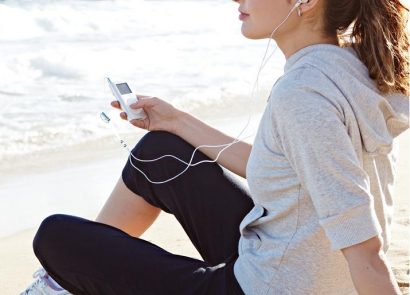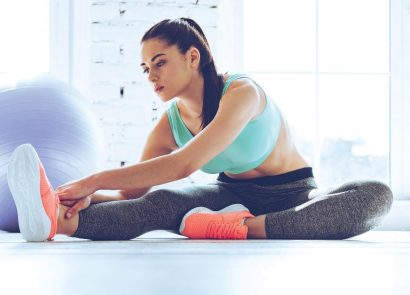Forget pounding the streets and pushing through barriers – the new way to be active is to let your body guide you
Sounds too good to be true, doesn’t it? Pushing through the pain barrier to get results has been the go-to method for anyone with a fitness goal, but now a new school of thought is calling for intuition to lead the way. Enter, intuitive exercise. We’ve heard of intuitive eating, but what exactly is intuitive exercising? “Training intuitively means that you exercise based on how you feel,” says Marvin Burton, head of fitness at Anytime Fitness UK (anytimefitness.co.uk). “It can mean that you are impulsive, less structured and generally happier to be active, which can make you feel more in control and less ‘forced’ to comply with what you may not enjoy.” So does this mean if you don’t feel like exercising, it’s a free pass not to? For example, if the alarm goes off early because you planned to go for a run, but you’d much rather roll over and go back to sleep, should you push through it and get up and go? “If you are tired and need the sleep, then I would suggest taking the rest,” says Marvin. “Exercising when you are tired won’t allow you to push yourself to the next level needed and can lead to injury. Kat Farrants, founder of Movement for Modern Life (movementformodernlife.com), agrees: “Sometimes, rest is the most healing thing we can do,” she says. “If you’re exhausted and you know that you haven’t slept properly, then you should absolutely go back to sleep. “It’s a question of getting to know yourself – would you benefit more from the rest, or does your body need shaking up and energising? When we learn to be quiet with ourselves, to meditate, to do quiet practises of yin yoga, we get to understand ourselves and learn exactly what we need.”
The bottom line is, it makes for a truly holistic approach to exercise, which can only be a good thing. “The benefits of intuitive exercise is that normal exercise programmes don’t tend to consider other aspects of a person’s lifestyle, such as additional stressors at work, home, and life in general, which all make up someone’s overall wellness and their ability to train,” says Luke Worthington, human movement and elite performance specialist (lukeworthington.com).
Stop punishing yourself
Forcing yourself to exercise can be counterproductive, and not just in the form of injury. “It can cause central fatigue,” explains Luke, “also known as adrenal fatigue. You should feel better after working out – not worse. Ditch the exercise classes that claim to ‘smash’ or ‘break’ you.” For Kat, the way exercise is sold to us is all wrong, and ‘no pain, no gain’ is a damaging slogan – we need to stop punishing ourselves. “It can actually cause self-hatred,” she explains. “We can be exercising as a means of punishing ourselves. Our exercise, and even yoga, that many of us practise is simply an extension of the way that many of us are taught to be in life – competitive and aggressive. We are taught that this is the best way to succeed. That way of being causes injury to ourselves physically, and emotionally, to ourselves and others, and can be debilitating and cause fatigue. But in fact, it’s those who are nourished and learn how to deeply care for themselves who succeed. We are able to learn how to support ourselves and others.”
When to push it
Of course, there are numerous studies which show really pushing our bodies, for example with HIIT training (high intensity interval training, when you exercise at the top of your ability for a very short period, then drop back to a more comfortable level), can decrease heart rate and blood pressure, and help us burn more fat. This sort of exercise has its place, too. “On the days you feel like a rock star, go for it,” says Luke. “Pushing yourself is something that you should prepare for,” says Marvin. “You can do this by arranging your lifestyle and other contributing factors, such as eating well in the subsequent days. If you wanted to really monitor this, you could track your morning resting heart rate of a series of days and look at trends in your rested state. If you are waking with an elevated heart rate, then this would suggest you are not getting deep sleep and need further rest before working at a high-intensity.” Understanding your body is something that takes practise and consistency, but it’s something that’s worth investing in. “The only way to exercise is intuitively,” says Kat. “It’s about having a deep respect for your body and for its long-term health. When we move intuitively it means that we’re able to sensitively be truly aware, awake and living in the here and now. We owe it to ourselves to be able to recognise how we feel, and be able to make our own exercises and practices bespoke to the real needs of our bodies, not our perceived needs or what we think we should be doing.”



















